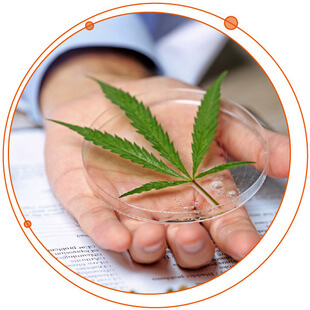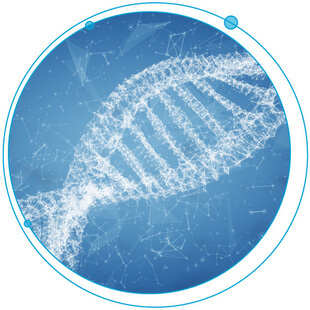To set up a SCIEX high flow source for microflow LC (Turbo V ion source, DuoSpray source or IonDrive Turbo V ion source), first you must replace the wider bore electrodes with more narrow bore hybrid electrodes. Note with the OptiFlow Turbo V ion sources, there are...
Tags
Pharma perspectives: The influence of LC-MS innovation on drug development outsourcing
It is no secret that (bio)pharmaceutical research and development is complex, both scientific and regulatory processes. Working for a contract research organization and more recently for SCIEX has provided an interesting perspective on trends the market experiences that affect many of us.
Overcoming uncertainty in your PFAS analysis
Just like gum on the bottom of a shoe, the existence of per- and poly-fluorinated alkyl substances (PFAS) in our environment is a sticky one. If you’re in the field of environmental testing, then you’re all too familiar with the threat these substances have on public health. While we have learned a lot about them over the years, there is still much more to understand. With the right detection methods, we can gather the information we need to empower us to make informed decisions on reducing the risks they impose.
6 Signs it’s time for a new vendor
A lab’s success depends on many factors from instrument quality to efficient operations, including being partnered with the right vendor. A vendor is more than just a supplier. They should provide you with a high-level quality of support in maximizing the lifespan and performance of your systems, reducing downtime, enhancing ROI and more. How do you know if you’re partnered with the right one? Here are six signs it might be time to find someone new.

Selecting an LC-MS system for quantitation of pharmaceutical drug development
We understand you are busy, needing to prioritize running instruments, reporting results and managing your laboratory to meet deadlines. We created a solution guide to explain how SCIEX systems fit in the drug development pipeline to save you time evaluating options.

Nitrosamines: Where are we now?
Nitrosamines are a large group of N-nitroso compounds that share a common functional N-N=O group. They are produced by a chemical reaction between a nitrosating agent and a secondary or tertiary amine. Back in 2018, nitrosamines suddenly found themselves in the spotlight when they were unexpectedly detected in medications for high blood pressure. Since then, they have been found in several other prescription medications, including those for heartburn, acid reflux and diabetes, resulting in manufacturers recalling some common medications.

Celebrating customer experience: Insights from SCIEX leaders
Introduction Customer Experience Day (CX Day) is a special occasion for SCIEX, celebrated every first Tuesday in October. It’s a day dedicated to recognizing the incredible value of our customers and the relentless dedication of our associates who strive to make...

PFAS analysis in food: a robustness study in sensitivity and stability
The combination of per- and polyfluoroalkyl substances (PFAS) testing, trace-level regulatory requirements and complex MS applications can be intimidating. In a recent webinar, now available on demand, SCIEX PFAS expert Craig Butt demonstrated how the new SCIEX 7500+ system can help make PFAS testing easier.

Your success and voice go a long way!
At the heart of everything we do is ensuring that your workflows and team are empowered to achieve optimal results with your SCIEX instruments, software, consumables, and services. Every interaction with SCIEX is designed to support your success through the dedication...

FDA’s final rule on LDTs: what does it mean for clinical laboratories?
On April 29, 2024, the U.S. Food and Drug Administration (FDA) announced a final rule regulating laboratory developed tests (LDTs) as in vitro diagnostic devices (IVDs) under the Federal Food, Drug and Cosmetic Act (FD&C Act). This rule amends FDA’s regulations to state that in vitro diagnostic tests “manufactured” by clinical laboratories fall within the scope of the FDA regulatory oversight and is poised to dramatically shift the way clinical diagnostic laboratories in the United States develop and offer LDTs in the future. Read this blog post for a basic overview of the scope, intent and implications of this final rule, including the regulatory requirements, exceptions and timeline for implementation.

LC-MS system replacement: Are you ready?
Meeting deadlines in a bioanalysis laboratory can be a big challenge. Older, less sensitive and less reliable LC-MS systems make it even more difficult. Even the disruption caused by the installation and validation can be disconcerting and delay decisions. Does this sound familiar?

Canada’s Focus on Cannabis Quality and Safety Intensifies
The Second in a Three-Part Series Welcome to the second in a series of blogs from the cannabis team at SCIEX, designed to bring you up to speed and put you in the lead of the recently legalized cannabis market in Canada. In the first blog, we introduced the Cannabis...

Looking for Ethanol Metabolites and Barbiturates in Urine? Get the Fast and Sensitive ‘Two Bird, One Stone’ Method
Alcohol is legal and widely available, but it is an intoxicating and addictive substance that can have harmful effects on the human mind and body. It reduces inhibitions and distorts judgment and rational decision making, making it the number one cause of criminal...

Sensitivity, It’s at the Very Heart of Who We Are
Walk into any modern pharmaceutical company these days, and you’ll likely find at least one if not many, SCIEX LC-MS/MS instruments. Assays for the detection and quantitation of small molecule drugs, metabolites, biotherapeutics, biomarkers, and many other analytes...

The Advantages of a Software Maintenance Agreement
You’ve bought your mass spectrometer. You’ve installed all your hardware. You’ve got your operating software set up. You’ve mastered your software workflow modules to optimize quantitative and qualitative data processing. That’s it, right? Even though your system is...

You’ve Edited the Gene. Now What?
Protein-Level Verification Without The Need For Antibodies Using SWATH® Acquisition. Fast, Comprehensive, and Highly Reproducible Although humans have been able to influence the traits of plants and animals for thousands of years through domestication and selective...

Environmental Scientists: Here’s Why You Should Consider Nominal Mass Spectrometry for Your Routine PFAS and Gen-X Testing in Drinking Water
How are you feeling about PFAS regulation right now? If you’re like us, you probably find it hard to pinpoint one specific feeling. But if we took a look at the current state of affairs, we’d all probably agree that it’s a minefield of uncertainty. Under the Safe...

Why Quant?
Every decision you make requires a number As a pharmaceutical scientist, you understand the challenges in getting a new drug through the discovery and development pipeline. As an innovation partner in mass spectrometry, SCIEX works continuously with you, our...

6 Tips to Keep Your Lab’s Software Up and Running
6 Tips to Keep Your Lab’s Software Up and Running Is your lab utilizing SCIEX instrumentation but hesitant about upgrading to the latest software release? Perhaps you are uncertain about key features, error codes, or output. Not to worry, behind every great mass...

A Smart Way to Profit from the Wealth of Biobanks
Microflow LC with SWATH® Acquisition for Digitizing Biobanks What if you could access thousands of high-quality samples for your research? What if these samples were well-annotated biological specimens? And what if they were carefully segmented into just the...

Why Conventional Flow LC-MS/MS Bioanalysis Is out and Microflow Is In
New technologies can transform a laboratory’s throughput and efficiency. At Alturas, if we try out a new technology, we ask: Does it work? Is it convenient? Is it rugged? Are we getting good results? When we look at the convenience, uptime, and overall data that we’re...

Food Testing Labs: What Technology Is Right for You?
Consumer safety is the driving force behind food analysis. From field (or ocean) to fork, there are numerous opportunities for food to become potentially hazardous to human health. As fast as new contaminants enter the food chain, changes in regulation and legislation...

Fueling Up: Eating To Stay Strong When You Have Cancer
This is the third and final post in our series in honor of International Women’s Day and our collaboration with World Cancer Research Fund. To wrap up, Deborah Howland talks about the importance of diet for anyone facing cancer – or trying to prevent it. A specialist...

5 Demands of Forensic Toxicologists and the Ultra-Fast Method That Meets Them
There just isn’t a screening approach available that can give us everything we need when throughput is the priority. Sound familiar? For many toxicology labs, there is a misconception that compromises need to be made when it comes to high throughput drug screening....

Uncovering the Links Between Childhood Growth, Body Size, and a Woman’s Risk of Breast Cancer
Welcome to the second in a series of posts marking International Women’s Day, and our ongoing support of World Cancer Research Fund. This installment is a review by Dr. Jennifer Baker, of her work, that, with the help of a WCRF grant, is studying body size and its links to breast cancer. Dr. Baker, Lead Investigator at Denmark’s Frederiksberg Hospital, has a Ph.D. in Human Nutrition from Cornell University. Her research focuses on clinical epidemiology.

Global Trends That Will Affect Neonicotinoid Usage in 2019
Neonicotinoids have become the most widely used class of insecticide in the world, with registration in 120 countries. However, these pesticides have become embroiled in multi-year controversy in Europe and North America due to their risk to beneficial...

A Multi-Omics Database for Tomato Research and Breeding
Ace. Beefsteak. Big Boy. Kumato. Early Girl. Roma. Sun Gold. San Marzano. These are just a few of the thousands of varieties of tomato plants available today. And while all of these varieties may be very different with respect to crop yield, disease resistance,...

A Diagnosis And A “Difficult Waiting Game”
We are thrilled to mark International Women’s Day 2019 by making our fourth annual donation to World Cancer Research Fund, a global not-for-profit organization and leading authority on the links between diet, nutrition, physical activity, and cancer. In fact, our...

Phthalates: The Everywhere Chemical That’s Hard to See, Not Anymore with LC-MS/MS
A few months back, the American Academy of Pediatrics published a technical report on the use of chemicals in food processing and the negative health effects on children. One of the main culprits is phthalates. The 411 of PhthalatesPhthalates are esters of phthalic...

The SCIEX Software Roadmap – The Journey Towards Windows 10 Compatibility is Complete
At SCIEX we are committed to providing you with the most up-to-date tools and technologies to meet the evolving needs of the laboratory. As part of that commitment, we were introducing our software product roadmap towards Windows 10 compatibility back in 2017. Many of...

10 Minutes in One Shot. That’s How Quickly You Can Screen 664 Forensics Compounds
Drug testing is a moving target. As novel psychoactive substances (NPS) rapidly emerge as a new class of designer stimulants (DS), global use has reached an all-time high over the last decade. Supposedly ‘legal’ alternatives to internationally controlled drugs, these...